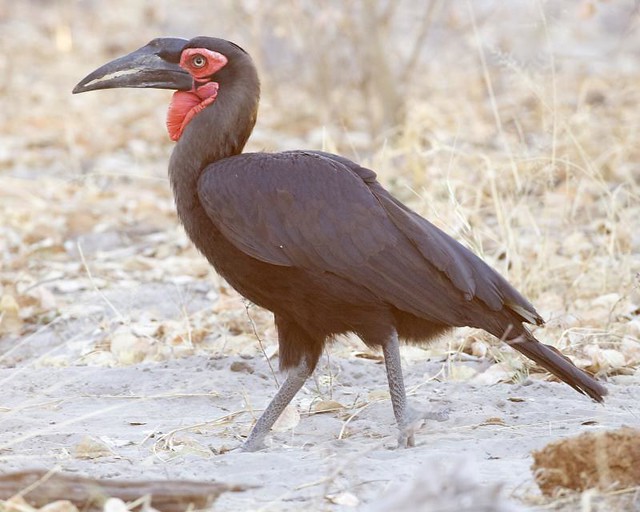2013 Bonanza Bird #1
Booming Calls and Long Eyelashes: The Fascinating World of Ground Hornbills
Our 2013 Birdorable Bonanza is off to an exciting start with the introduction of the Southern Ground Hornbill. These striking birds are native to parts of southern Africa, where they have carved out a unique niche in the avian world.

Southern Ground Hornbills are known for their complex social structure. They live in groups consisting of a breeding pair and several helper birds. These helpers are typically related to the breeding pair and play a crucial role in raising offspring. Unlike many bird species where only the parents care for the young, Southern Ground Hornbills have a cooperative breeding system. This means that young hornbills, often from previous years' broods, assist in rearing the chicks.
One distinctive feature of Southern Ground Hornbills is their bare facial skin, which stands out in stark contrast to their dark feathers. This exposed skin serves a practical purpose. During the dry spells in the African savannah, dust can be a significant issue. To combat this, Southern Ground Hornbills have evolved specially adapted feathers around their eyes that function like long eyelashes. These "eyelash feathers" help keep dust and debris away from their sensitive eyes, ensuring clear vision even in dusty conditions.
Southern Ground Hornbills are large and impressive birds, known for their deep, booming calls that resonate across the savannah. Their unique appearance and fascinating behavior make them a captivating addition to the Birdorable family.

Stay tuned for more exciting bird additions as our 2013 Birdorable Bonanza continues throughout the month of July!
Our Bonanza continues tomorrow with a small beach-nesting species. Tune in tomorrow to see what it is!










Comments
Leave a comment
Thank you!